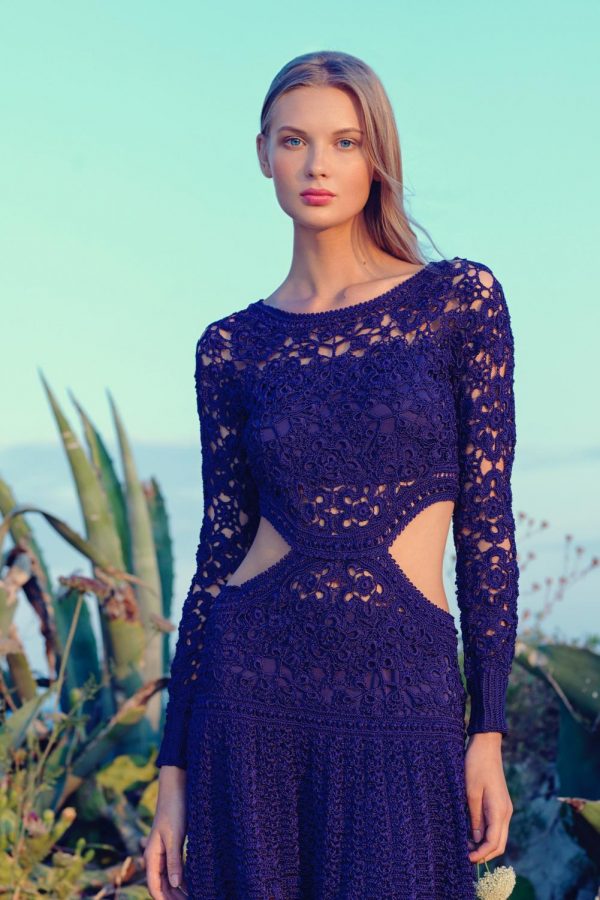Reuse, reduce, recycle: Eco-friendly clothing rises in popularity
Photo by uploader from Unsplash Monica Silva.
A model poses in a handmade purple lace crochet long-sleeved dress as slow fashion and crochet clothing are gaining popularity in the fashion industry.
February 23, 2021
Around the world, consumers shop daily for clothing and materials to follow the latest trends. However, many don’t realize how they are feeding into the dangerous cycle of fast fashion that corrupts the planet and endangers human lives. Yet, there is a hope that may spark change in the fashion industry: slow-fashion.
Ever since the Rana Plaza incident in which 1,100 fashion workers died due to poor working conditions in 2013, several clothing companies like Vetta and Amour Vert have been aiming to achieve sustainable and ethical fashion through eco-friendly lifestyle products. Other companies around the world such as Dressember and Liberty also try to promote awareness of the environmental issues revolving around fashion.
“I think my experience with organizations like Dressember and Liberty in North Korea have taught me the tragedy and pain behind fashion and its unethical labor network,” senior Alison Lim said. “Ultimately, the Rana Plaza disaster is a reflection of the industry’s darkest secrets. It definitely revealed the importance of labor safety and protection laws, and pushed me to start purchasing second-hand clothes more frequently.”
According to the Good Housekeeping Institute, whether a product is ethical or sustainable is determined by three factors: design, sourcing and production processes. They also do a background check on the product’s effect on the environment, to the workers and to the consumers who purchase it. Products that pass this test should also avoid increasing the five main stressors of our planet: water usage, hazardous chemicals, the short lifespan of products, waste and agriculture.
“Compared to thrifted clothing, which is just recycled clothes, slow fashion is an entirely new process that keeps in mind the environment starting from the beginning of production, which I find pretty cool,” senior Noor Chouman said.
Do-it-yourself clothing crafts such as crochet clothing have taken the media by a storm as consumers found them to be more environmentally friendly. According to Contrado, the fine, loop-like construction and vibrant thread colors of crochet clothing make it an interesting way to break the monotony of items used for everyday fashion and living. Crochet clothing can be made from materials such as metal, wood or plastic using a crochet hook.
“I would love to purchase or even make my own crochet clothing; it seems like a fun activity to do, maybe even therapeutic,” Chouman said. “I love that it has started a trend on social media. It’s a great step to becoming a fashionable environmentalist.”
Much fair trade and ethical clothing brands with affordable and inclusive fashion are rising in popularity. For example, the fashion company Eileen Fisher, with its organic linen clothing based in New York, has made it a central part of its mission to approach fashion in an ethical and transparent way that considers both people and the planet. By 2025, Eileen Fisher plans to reduce its greenhouse gas emissions created during the production and shipping of their garments by 25%.
“I’m hoping slow fashion will take over the industry, but I still think it won’t happen for a while,” Lim said. “Though, I think many people, including myself, will gradually purchase more from environmental friendly brands as it does serve as a greater reason to support those brands if they are making an effort.”



